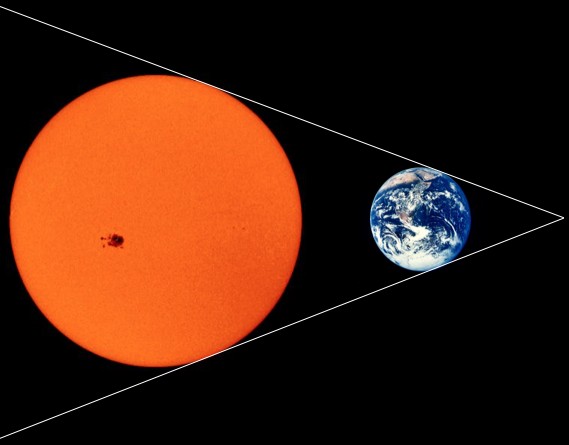Physicist: The issue here is the equinoxes are the two days of the year when the length of the day should be exactly as long as the night. And yet you’ll find that on the equinox the day is always slightly longer than 12 hours. As it happens, there’s nothing particularly special about the exquini. There’s just more daytime than nighttime overall.
Kind of inspiring!

Because the Sun is bigger than the Earth its light wraps just a little more than halfway around our kick-ass planet. This picture is wildly out of proportion; the Earth is actually a few dozen times smaller and a couple hundred times farther away.
But there’s one more slick trick that Earth has for keeping the lights on. Before the light from the Sun can get to us (here on the ground) it has to pass through the atmosphere. While the atmosphere itself doesn’t do too much (aside from scattering blue light and helping things breathe) the transition from the airlessness of space to the airfullness of here does change the direction that light travels. This is just refraction, which is the same effect responsible for things not being where they appear to be at the bottom of swimming pools, lenses working, and blurry vision under water.

The shallower the angle at which the sunlight hits the top of the atmosphere, the more it bends. This effect ramps up close to the horizon so much that it warps the shape of the Sun. That is, the image of the Sun is raised but the bottom of the Sun is raised more than the top.
Basically, when light has to pass between a medium where it can travel fast (space counts) to one where it travels slower, the light will bend toward the slower medium.
So, every day a handful of physical laws conspire to give us a couple more minutes of sunlight than you might otherwise expect (even on the equinoctes!).